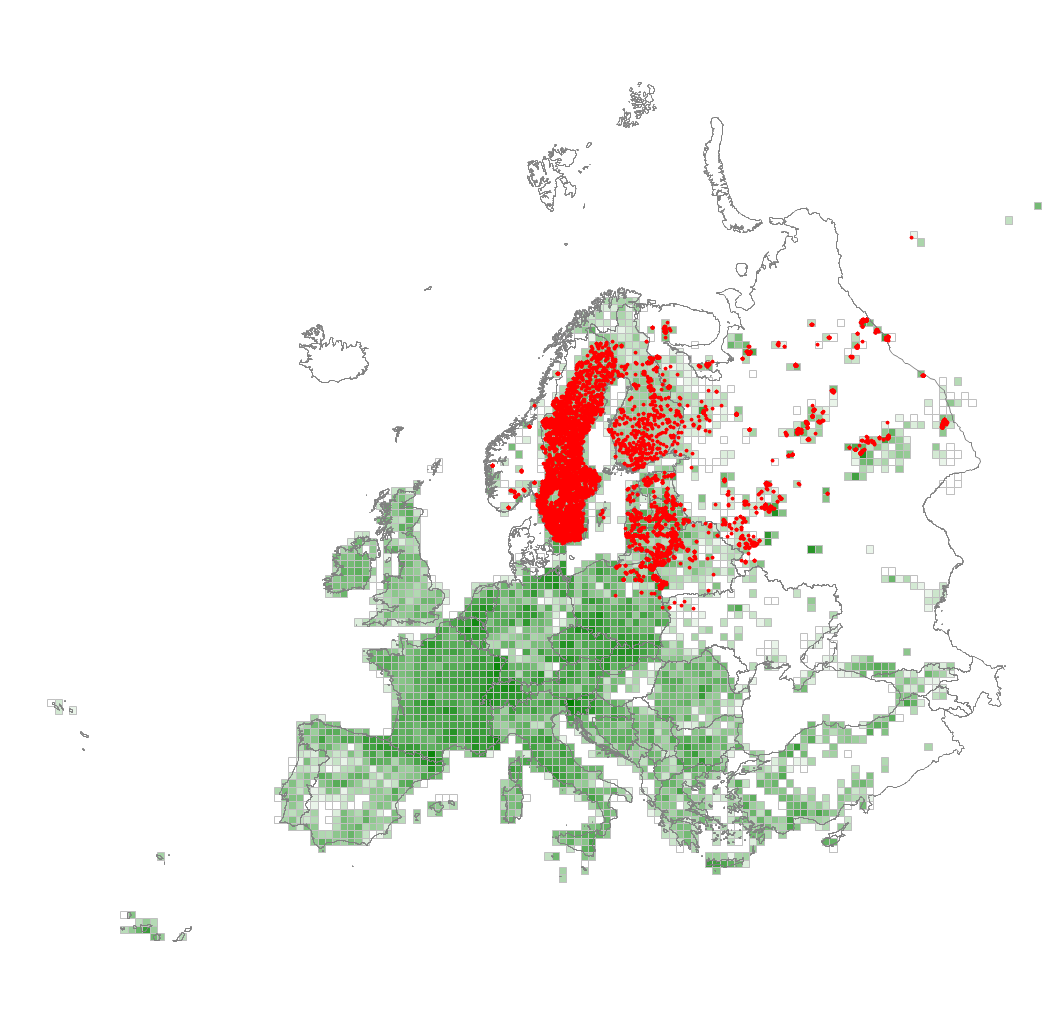T3F Dark taiga
Forest naturally dominated by spruce (Picea abies and Picea obovata), Siberian fir (Abies sibirica) or Siberian pine (Pinus sibirica) on more mesic, usually podzolic soils through the north-eastern continental and boreal regions, often with a subordinate deciduous broadleaf component (e.g. Betula pendula and Betula pubescens) and in places even some Scots pine (Pinus sylvestris) in the canopy and understorey. The field-layer has a significant participation of dwarf shrubs, bryophytes and lichens. Some forests with Picea or Abies sibirica can be rich in tall herbs.
Remark: Spruce forests of the hemiboreal and boreal zone on brown soils, with a species-rich herb layer consisting of nutrient-demanding forest herbs (e.g. Aegopodium podagraria, Anemone nemorosa, Brachypodium sylvaticum, Hepatica nobilis, Hieracium lachenalii, Hieracium murorum, Lamium galeobdolon, Melica nutans, Mercurialis perennis, Mycelis muralis and Oxalis acetosella) is very different from the taiga spruce forest with a predominance of dwarf shrubs and bryophytes in the field layer. These forests need to be considered as potential new habitat.
Chytrý M., Tichý L., Hennekens S.M., Knollová I., Janssen J.A.M., Rodwell J.S. … Schaminée J.H.J. (2020) EUNIS Habitat Classification: expert system, characteristic species combinations and distribution maps of European habitats. Applied Vegetation Science 23: 648–675. https://doi.org/10.1111/avsc.12519
Version 2025-10-03, https://doi.org/10.5281/zenodo.16895007.
For the official presentation of the EUNIS Habitat Classification from the European Environment Agency, please see: EUNIS Terrestrial Habitat Classification 2021. The FloraVeg.EU presentation may show modifications and partial updates to the habitat classification.
